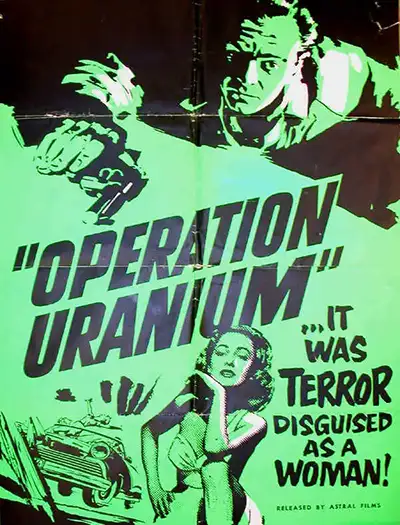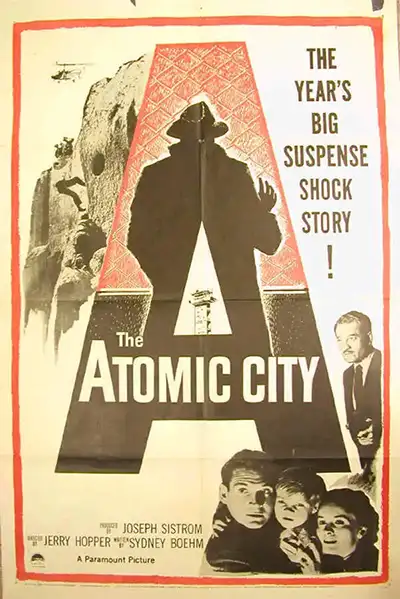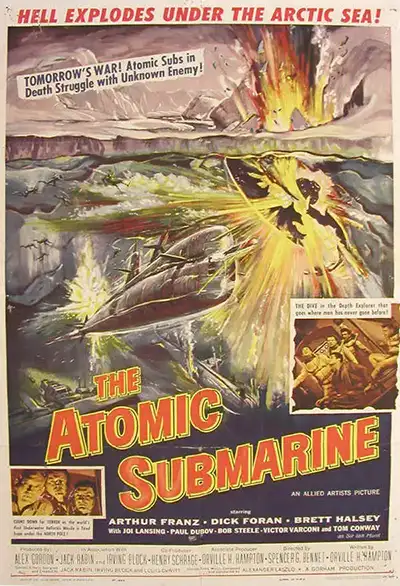
During the 1950s and into the 1960s, the themes of radiation and radioactivity had made their way to Hollywood. Numerous movies were made during this timeframe around the idea of atomic energy. In many cases, there was a negative connotation attached to the idea of atomic anything, and the movies presented the dangers of radiation. Over the years, Paul Frame, Ph.D., retired ORAU health physicist and former director of ORAU’s Professional Training Programs (PTP), collected some of the most fascinating movie posters and displayed them in the PTP health physics training facility in Oak Ridge, Tenn. Here are four interesting facts about the atomic movie posters that have been included in ORAU’s Museum of Radiation and Radioactivity:
1. Posters were keyword selected
In total, 14 different movie posters were selected to become a part of the museum collection. As you may expect, there were many more radiation-focused movies made during this time. However, each of these posters was brought in based on the titles of the movies or other words that were presented on the poster. According to Frame, he selected the posters that had one of a few keywords in the movie title: radioactive, uranium, or atomic. In the 1950s and 1960s, there was a ton of interest in atomic energy and nuclear war, and lots of science fiction movies were produced on these topics. The ones with those keywords caught Frame’s attention.
2. Scare tactics were prevalent in many movies

In the world of science fiction movies, many ideas are often stretched to include some type of fear tactic, and that was happening around the ideas of radiation and atomic energy. When you look at some of the movie titles in the collection, you will see the idea that radiation is a deadly force. A few examples include “The Atomic Monster,” “Operation Uranium,” and “The Horror of Party Beach.” It was not uncommon to see a movie during the 1950s where a monster was formed due to the exposure of radioactive material. The idea that radioactive materials or radiation could create mutants was also heavily portrayed in science fiction movies of this timeframe.
3. Movies were heavily based on the unknown
When you take the time to focus in on the messaging that is being portrayed in the movie posters, you will notice a lot of topics that are still talked about today. For example, “The Atomic Submarine” movie poster is all about the discovery of an alien spacecraft. Even though this movie was made back in 1959, the idea of aliens and UFOs is still highly debated. Of course, in some cases the fear of radiation and radioactivity still lingers as well. According to Frame, the fear that these movies portrayed left a lasting impression on the overall idea of radiation and atomic energy.
4. Movies were derived from existing explorations

If you are wondering why these movies involving radiation and uranium were so popular during the 1950s and 1960s, you have to look at other things happening in the world during this time period. Due to the interest of atomic energy in the 1950s and the hunt for uranium, these topics were heavily reported in the news. As with most science fiction movies, they took these ideas and turned them into dramatic scenes that drove people to the theaters. Into the 1960s, the messaging switched from uranium exploration to atomic war, which was a highly discussed topic.
Want to learn more about the atomic movie posters at ORAU’s Museum of Radiation and Radioactivity? Check out the museum directory to take a look at the posters and explore all the other items in the collection.